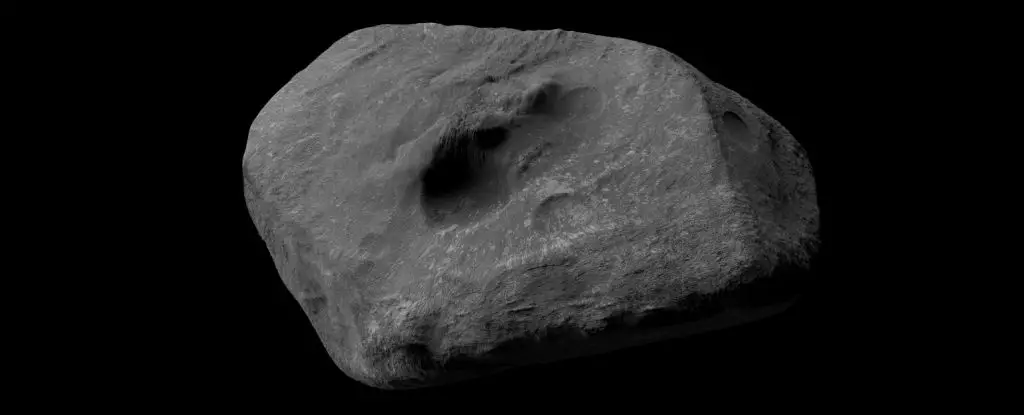On December 27, 2024, a cosmic visitor named asteroid 2024 YR4 caught the world’s attention as it seemingly materialized from the void of space. For astronomers and enthusiasts alike, the sudden emergence of such celestial objects raises more questions than it answers. Where did this asteroid originate? What does it consist of? How did it come to be on a collision course with Earth? Such inquiries are crucial, particularly as scientists begin to uncover the origins and characteristics of these cosmic wanderers.
Asteroid 2024 YR4 has been traced back to the central region of the main asteroid belt, a location wedged between the orbits of Mars and Jupiter. Traditionally, this part of the asteroid belt has not been considered a breeding ground for asteroids on a path to cross Earth’s orbit. “We are surprised about its origin in the central main asteroid belt,” remarked Bryca Bolin from Eureka Scientific, acknowledging the astonishment of researchers. This revelation challenges established ideas about how Earth-crossing asteroids are formed and reinforces the need for continuous examination in planetary defense.
A Cosmic Roll Call: The Trajectory and Potential Impact
The initial observations of 2024 YR4 prompted alarm bells as astronomers calculated its trajectory. Although there was no immediate threat during its flyby, assessments indicated that this rock might eclipse our planet again in 2032. As soon as this potential danger was identified, scientists began running simulations to evaluate the impact’s risk level. Fortunately, the danger downgraded, though the Moon still finds itself in a slight danger zone, with a few percentage points still brightening the radar.
Branded a “city killer” asteroid, the moniker highlights the devastating possibilities this celestial body could unleash if it were to collide with Earth. Fortunately, identifying such asteroids allows astronomers to prioritize research and develop impact mitigation plans. Analyzing their size, trajectory, and material compositions becomes paramount to understanding the consequences of an impact and improving planetary defense strategies.
Decoding the Cosmic Composition
Scientific scrutiny into 2024 YR4’s characteristics brought forth illuminating insights. With support from advanced telescopes like the W.M. Keck and Gemini South, researchers have managed to piece together a detailed profile of this asteroid. Notably, it has a retrograde spin, completing a rotation every 20 minutes, coupled with its distinctly flattened, irregular shape comparable to a hockey puck.
Bolin emphasizes the significance of these findings, stating that understanding the shape and structural integrity of the asteroid gives clues on its formation and potential deflection techniques if needed. With potential threats lurking in the cosmos, innovating rapid-response tactics is necessary for planetary safeguarding.
Asteroids come in various types, principally categorized into two: carbonaceous and siliceous. The former are often characterized by their mixed mineral composition and porous structure, while the latter are denser and generally considered more stable. Based on its features, 2024 YR4 likely fits into the S-type category, providing valuable context for researchers who seek strategies for potential impact mitigation.
A Call to Action for Future Research
The implications of discovering an asteroid like 2024 YR4 are monumental. Not only do they deepen our understanding of the Solar System’s dynamics, but they also highlight the evolving field of planetary defense. As new methods emerge for identifying and tracking near-Earth objects, scientists must remain vigilant. This includes not only gathering information about incoming celestial bodies but analyzing them to prepare for any unforeseen events that may affect our planet.
The excitement surrounding 2024 YR4 is palpable within the scientific community as they eagerly anticipate what the future holds. This asteroid stands as one of the largest recent discoveries with the potential to collide with the Moon, eliciting discussions on how humanity can proactively manage these cosmic threats. The knowledge accrued from studying asteroids like 2024 YR4 serves as a reminder that while we may think we know our Solar System, the universe never ceases to amaze—redefining our comprehension of what lies in the vast expanse of space.
In the world of astronomy, where questions abound and mysteries await resolution, the importance of interdisciplinary research and public awareness cannot be overstated. Scientists, policymakers, and the general public must come together to foster a culture of curiosity and caution regarding planetary threats, ensuring we are prepared for whatever the cosmos may throw our way.

